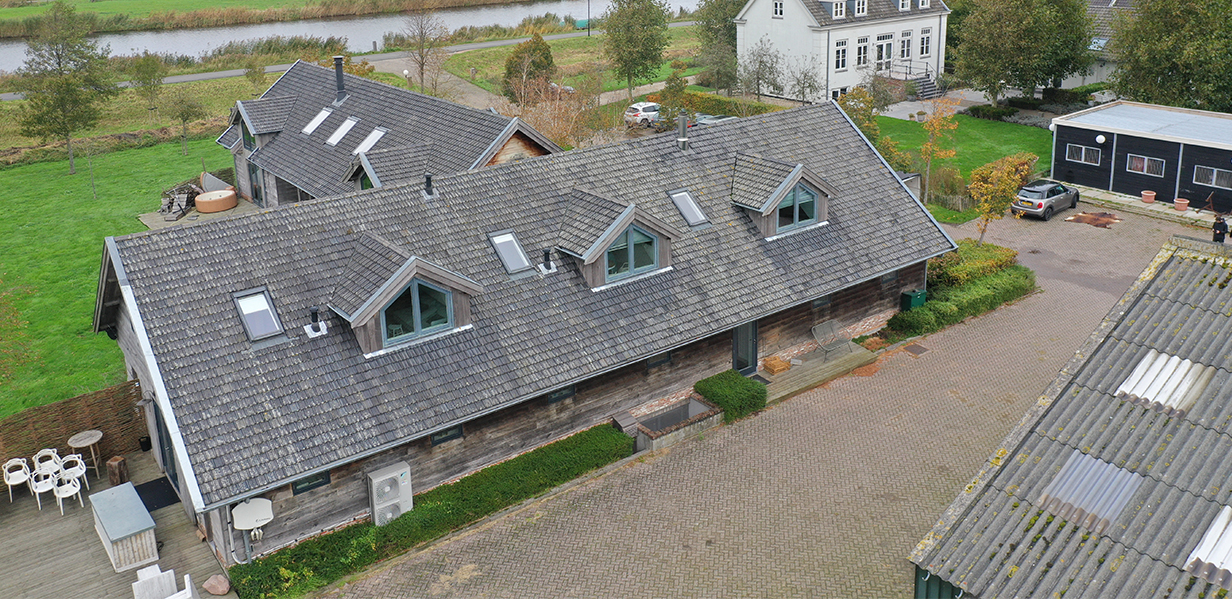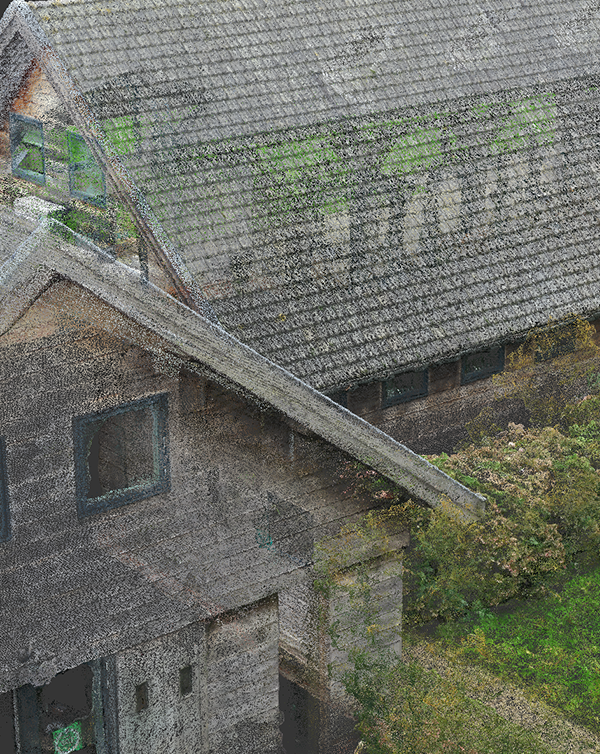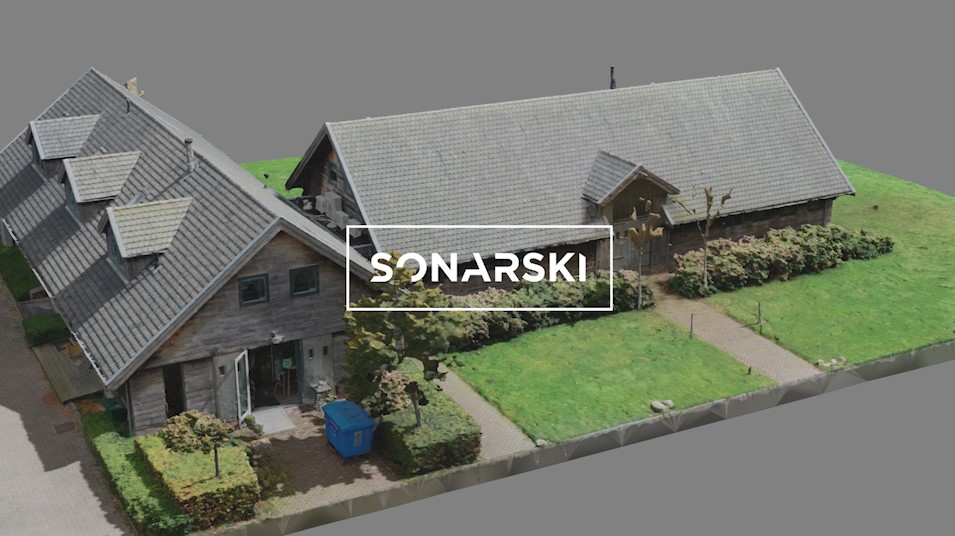Now that the scanning was complete, we could proceed to processing the data. We processed the data with our SLAM algorithm, which provided us two point clouds. The first point cloud was created with the LiDAR data. This point cloud is highly accurate but does not have any colour information. The second point cloud was created with Photogrammetry. This point cloud has colour and is very detailed but lacks accuracy.
By projecting the coloured point cloud onto the LiDAR point cloud, we create one single point cloud which is both accurate, detailed and with colour.
Further proccessing might include:
- Creating a texture map from the colour information
- Turning the point cloud into a mesh
- Simplifying the point cloud or mesh (decimate)
- Cleaning the point cloud of noise (excessive points)
- Exporting to different formats



